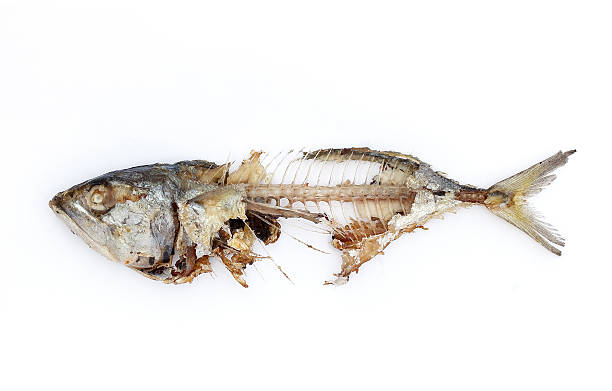In storytelling, there is a plot device called a MacGuffin. This is an object, character, or event used to push the narrative forward and yet isn’t all that important in and of itself. In other words, a thing that creates motivation and yet never even needs to be revealed to the audience. We are supposed to believe this is something significant or valuable and that’s all we need to be told.

While reading through the Old Testament and pondering how temple worship worked, it is hard not to see the Ark of the Covenant as a sort of MacGuffin. Sure, their God was not a thing. And yet this sacred object, we’re told, contained something of God’s presence and would even strike dead those who innocently mishandled it. Of course, most people may never have seen it, it was kept behind a veil in the temple where few had access, but all would be told of the sacredness.
“Then spake Solomon, The LORD said that he would dwell in the thick darkness. I have surely built thee an house to dwell in, a settled place for thee to abide in for ever.”
(1 Kings 8:12-13 KJV)
In fact, it was made sacred as much by this treatment as much as what actually dwelled within it. The mythology surrounding it, as in the cultural or religious significance that was given to it, was extremely powerful. Starting a special priestly class, Tabernacle and ritual practice, later the impressive structure of the Temple, there was a huge investment in this sacred object. And yet, for all the attention it got, the Ark itself was usually kept hidden in darkness, guarded, within the Holy of Holies and behind a veil.


Holy Of Holies
There are other things hidden behind a veil with significant motivational power. One of them being the marriage MacGuffin. For me this was a pursuit of something sacred, the church does consider the marriage bed to be sacred, and there is a whole mythology that is constructed around marriage.
This is what made it so jarring when, during my pursuit of the impossibly, a psychiatrist would classify it as “sexual attraction.” They had just heard me describe a pure and faith-driven quest only to reframe it in such crass terms. How dare they! I was after love, not sex! It really did offend me at the time. With their clinical roughness, they had penetrated the veil of my marriage delusion. It was an act of sacrilege.
My childhood innocence is beyond recovery at this point. For whatever reason, those of us born into a fundamentalist purity culture believe that we must be in denial of our own sexual urges that lead to marriage. This is strange given how blunt St. Paul is on the topic, in 1 Corinthians 7:9, advising those who “burn with passion” to get married and basically get a room. Why the veil of secrecy, these many euphemistic expressions to cover and mystify the bumping of uglies?
Speaking of erotic euphemism:
“Awake, O north wind; And come, thou south; Blow upon my garden, That the spices thereof may flow out. Let my beloved come into his garden, And eat his pleasant fruits.”
(Song of Solomon 4:16 KJV)
Why blush, be embarrassed or ashamed by this?
Could it be that without dressing this whole affair up with great ceremony, white bridal veils, teary-eyed parents, and such, we would have to face the reality of being creatures as hormone-driven as two ducks on a pond? I mean, why aren’t we as honest as Solomon was in his poetry: “Roses are red, violets are blue, you have large breasts, that’s why I love you!” Without white lies or half-truths, would our version of romance even survive?
So what is underneath the veil?
All of those things that I’ve discovered in the intervening years, that’s what…


Is the only difference the price each requires?
To the extent I was in deep denial of my own sexuality, I was doubly in denial of the sexual nature of my female counterparts within the conservative Anabaptist culture. The young lady who first propositioned, then made it all awkward and worried about somehow being ‘defiled’ if she got coffee with me has long since dropped the veil. She has joined the others whom I had held in such high regard, revealed now as not being nearly as prudish or pure as I had once imagined. That’s not a criticism or judgment either. It is just the reality of the situation.
So, when the impossibly told me “I cannot not love that you the way that you wanted to be loved” what she was really saying the same thing as those Tinder girls with “must be 6′ or over to ride” in their profiles. She wanted a guy who got her juices flowing, certainly someone a bit more rugged and traditionally masculine than me. And, I mean, why not? Why hide it? Marriage is not only (or even primarily) about the high ideal that is advertised. It is also about our scratching the itch. Which is to say getting down and dirty with someone who meets the correct physical qualifications.
Also, perhaps it is that the fantasy is more satisfying than the act itself? We read how Amnon, King David’s eldest son, had such an infatuation with his half-sister Tamar. It tells us after having his way with her he despised her. Or consider the disgust of Victorian-era art critic John Ruskin when, in marriage, he discovered that women aren’t like porcelain dolls. You’ll have to forgive him, they put skirts over piano legs back then to keep the eyes of men safe from the unveiled feminine form. Maybe there are some things that are better chased than caught? If we find what we went looking for we might be shocked at what we found.
Sacred Fertility & Symbolism
The final stop on this exploration of sacred and taboo has to do with something that I can’t unsee now that I’ve seen it. I’m bound to lose half of my final two readers for going here.
Nevertheless, I’m not here to please the pearl-clutching crowd.
For me, this is not about toppling sacred cows or making people uncomfortable, it is about being honest enough to see reality for what it is and correcting our own perspectives of the cultural baggage we’ve inherited.
First, what drives much of the Old Testament Biblical narrative? We know Abraham’s story, how he wanted an heir, and yet how Sarai, his wife, was unable to produce. In this Genesis account we see various cases where wombs are opened or closed. And the punishment of Michal, for rebuking her dancing husband, was that she had no child until the day of her death. Being fruitful and multiplying was a high priority, as well as having sons to carry on the family line.
As an aside, we live in a very sterile world in comparison to our ancestors, we’ve become sheltered and sensitive to the point many do not eat meat or want their children exposed to death. This wasn’t an option at the time when Scripture was written. There is a kind of earthiness to their world and perspective, something more primal or real, a brutality of life difficult to stomach. It is with this reality in mind, that we also have different sexual taboos and could be more prudish than they were about such things.
Second, I was sitting in church and taking a look at the colorful streams of light pouring through a stained glass image of Jesus pulling Adam and Eve from the grave. My moment of appreciation for this beauty was interrupted by my noticing part of the symbolism. Jesus is shown to be emerging from an oval shape, at the bottom of which are the covers of their opened tombs. Requiring very little, if any, imagination, it bears striking resemblance to one Christian symbol even an iconoclastic Protestant would likely recognize, and that being a vertically arranged “Jesus fish” or Ichthys.


However, concurrent to this, and a cause of some momentary shame, was the thought “That’s a vulva!” I mean, how inappropriate to think that any part of the female anatomy, let alone those private nether regions, be put on prominent display or be associated with Christ!
But is it really?
A mother, Mary, is necessary for the birth of Jesus. Without her, and her womb that is miraculously made made more spacious than the heavens, there is no salvation for mankind. It didn’t matter if God could have used any other way, all we know is that he used this young woman and all of the faithful since have followed the lead of Elizabeth, who full of the Holy Spirit loudly proclaimed:
“Blessed are you among women, and blessed is the child you will bear! But why am I so favored, that the mother of my Lord should come to me?”
(Luke 1:42-43 NIV)
As far as the symbolism, I would find that indeed my observation had basis in reality as the Ichthys is a version of Vesica Piscis (literally “fishes bladder” in Latin) or, in sacred geometry, the oval that two intersecting circles create an oval and said to be the place where spiritual and physical worlds interface. According to Syriac Press, in ancient Mesopotamia, it was used as a symbol of the combination of masculine and feminine energies that create a Divine Child. Any pagan coincidence, like those with baptism, only serves to reinforce the power of the symbolism.


In a time when many settle for ‘fur babies’ over producing human offspring and the unique female contribution to the world is dismissed by feminists seeking male roles— when real women are mocked by men who pretend to menstruate—we need to start doubling down on our celebration of this reproductive role of women. Phrases like “saved through childbearing” did not come into the Bible by accident. The world was saved by the one who came out of Mary’s fertile womb and we ought not to downplay or be embarrassed by this.
Empty Vessel—Dying Corpse
Solomon’s Temple was destroyed in 586 BC, by the Babylonians, and the fate of the Ark within it is unknown. This loss of sacred relics did not stop the Jewish faithful from rebuilding the temple, in 515 BC, but does make one wonder how much the contents mattered. So long as the people were kept in awe that’s all that really seemed to be the point whether the edifice truly contained anything of real value or not. With nothing behind the veil, the people still did the ritual and sacrifice.
Why?
It seems sort of analogous to the US Dollar, a currency once backed by actual gold and now only by faith people continue to hold in the economic system it represents. The harsh reality is that it has become merely a means to exploit. It is a way for a few elites to rob the value of the savings of other people by printing more money for themselves. Those money changers Jesus chased out of the Temple were the amateurs. The real professionals never get caught. The carefully maintained veil of secrecy around the Federal Reserve ensures that this particular scam continues for a long long time.
But, I digress.
G. K. Chesterton once wrote, “a corpse crawling with worms has an increased vitality,” and that “a dead man may look like a sleeping man a moment after he is dead,” trying to describe the subtle yet significant difference between truly sacred tradition and a cheap gimmick version of this religion that was intended to replace it. Perhaps this is what has me disillusioned? With so many things, once the veil is lifted (which few ever dare to do) so much of the enticing mystery and popular mythology which propelled us forward falls apart. And in this way some of the life I had felt early on feels more like decomposition.

Perhaps this is what is left when you’re the dog who has finally caught the car? Nothing left to do but pee on the tire and continue on your way again. The anticipation leading up to the day of revelation may be more exciting than the moment the veil is lifted and when all is seen. Ruskin may have spent the rest of his life waxing eloquently about his female love interest. Or maybe—just maybe—that MacGuffin which led us to the point we’re at today was merely a plot device to move the story forward and the only truly sacred part of the encounter is the fruit produced?
Sexual pleasure is fleeting. We’re lured there by our imaginations, by our desire for what is beyond the veil of marriage, but it can all be a bit anti-climactic and even repulsive once you consider it after it is finally unwrapped from the flowery speech and those flawless air-brushed mental pictures. But fatherhood, by contrast, seeing the great potential of my son, tending to his needs, pruning as needed, is something extremely fulfilling. It is what has emerged from the womb that brings us renewed life and hope. Pity the barren, the dying corpse who has lifted the veil and only saw the emptiness of their pursuits.



